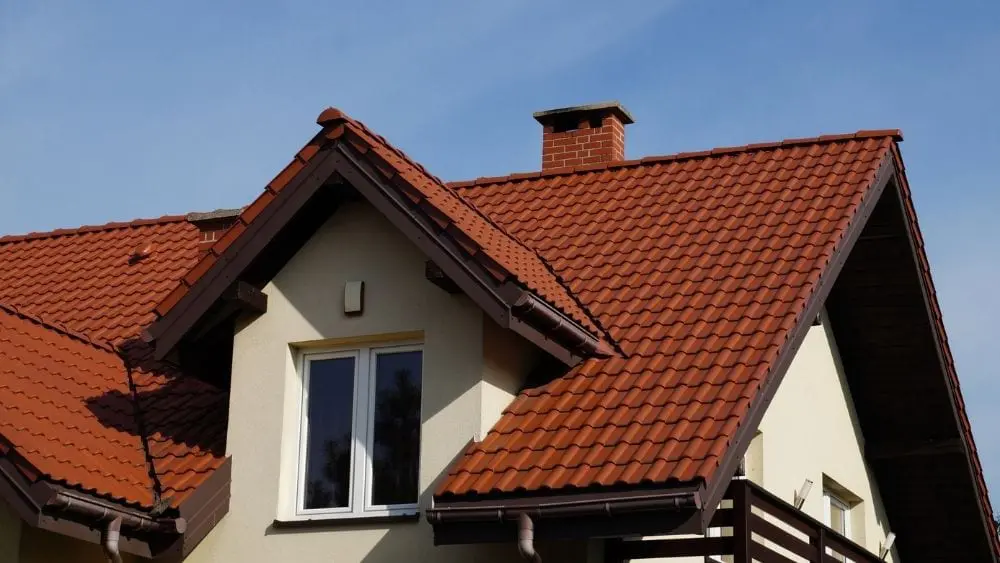
I just love the warm and classic feeling of a timeless stucco façade. This ancient siding material has been used in many of the world’s greatest and oldest empires to present a distinguished exterior appearance. Nowadays, it’s a preferable siding choice for its durability, versatility, and stylish hue availability.
If you’re trying to decide what’s the best type of siding for your house, there are some pros and cons of going with stucco. Be sure to consult your local expert for construction tips and recommendations based on your specific climate. You can also speak with a designer who has experience with stucco types and textures before hiring a professional to begin installation.
If you’re ready to get your feet wet, read on to learn more about the basics of stucco siding and decide which design finish best complements your personal home style.
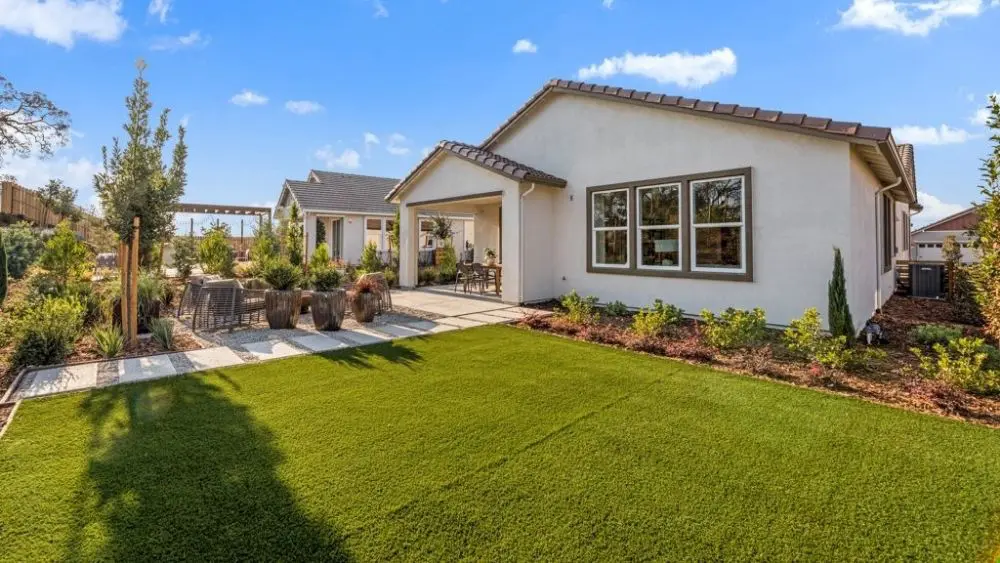
What Is Stucco Siding?
Stucco is a siding material composed mainly of Portland cement, sand, lime, and water. It is applied in three layers over a lath base to achieve a solid, even, and seamless home exterior.
Traditional vs. Synthetic
Traditional stucco includes sand, lime, water, and usually cement; glass fibers and acrylics may be added for reinforced durability. Cement stucco is quite hard and must be applied on a stable mesh base, known as lath, to prevent cracking. It is long-lasting, versatile, and easily-maintained.
Synthetic stucco is relatively new to the market. This type does not add in cement or lime, but rather an acrylic resin, which makes it resistant to moisture and water damage. It is often applied over a foam board rather than mesh and is more reliable overall. The acrylic resin allows for more movement, making the siding more resistant to cracks and breakage. This type is also slightly more expensive than traditional stucco.
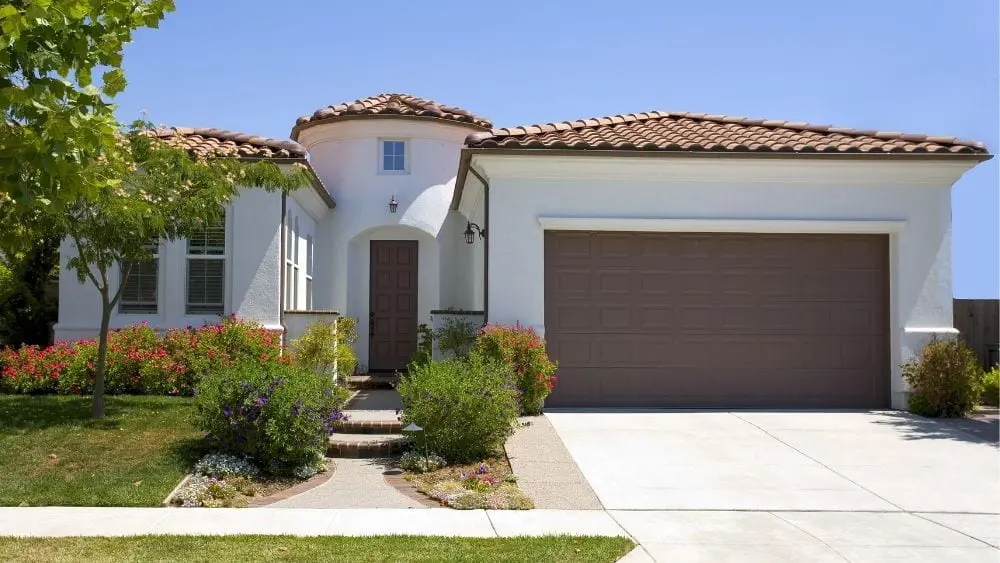
Design Styles for Stucco Siding
Stucco siding is incredibly versatile and moldable to a variety of finishes to fit your personal home aesthetic. Here are a few common design styles that you will find with stucco.
Cat Face
A cat face finish is perfect for homeowners who want a distinctive look that is light and airy. There are large smooth areas with various smaller rough patches (known as “inclusions”) scattered evenly throughout. This look can be achieved by using traditional or synthetic stucco but requires two coats of finish. The final touches are completed by hand, so the process is a bit labor-intensive.
Dash
A dash finish is achieved by spraying either traditional or synthetic stucco in heavy, medium, or light volume. Because it results in a rough and uneven finish, dash stucco may be easily patched in the case of cracks or breakage.
English
English finish is typically reserved for traditional stucco. It is less common on modern homes and tends to give your structure a more vintage look. It is generally amenable to repairs and patches when necessary.
Float or Sand
Perhaps the most common design, the float or sand finish is often found on commercial buildings; very few residential homes include this type of finish. However, it may be applied with traditional or synthetic stucco and requires only one coat. If you’re looking for something quick and easy, a simple float or sand stucco design will give you the best bang for your buck.
Lace And Skip
When you think of stucco, a lace and skip finish is probably the image that first comes to mind. This forgiving texture easily hides imperfections and is easy to patch. It is applied in two coats, including a base coat and a texture coat. Traditional is best for lace and skip to give maximum depth to your siding, but synthetic may also be used.
Smooth Texture
Smooth texture finishes are the most difficult to achieve, but give a truly elegant appearance if professionally applied. It’s simple to clean and may include a mix of colors to create a mottled façade. It usually includes a fine cement base, but may be achieved with a synthetic finish, as well. Typically, it requires a fine or ultra-fine stucco, but a medium may also do the trick.
A word of caution: This finish is not easy to repair and has a higher tendency to break or crack.
Santa Barbara
A Santa Barbara finish is similar to a smooth finish, but utilizes finer sand particles to create its distinctive look. Its appearance is often irregular to look natural and resembles adobe-style homes. It is usually created with traditional stucco and can be challenging to apply and repair.
Worm
A worm finish includes larger pieces of aggregate mixed into the stucco that create small grooves in the texture of the stucco spread. It is pretty unique and fairly labor-intensive to install since it is applied entirely by hand.
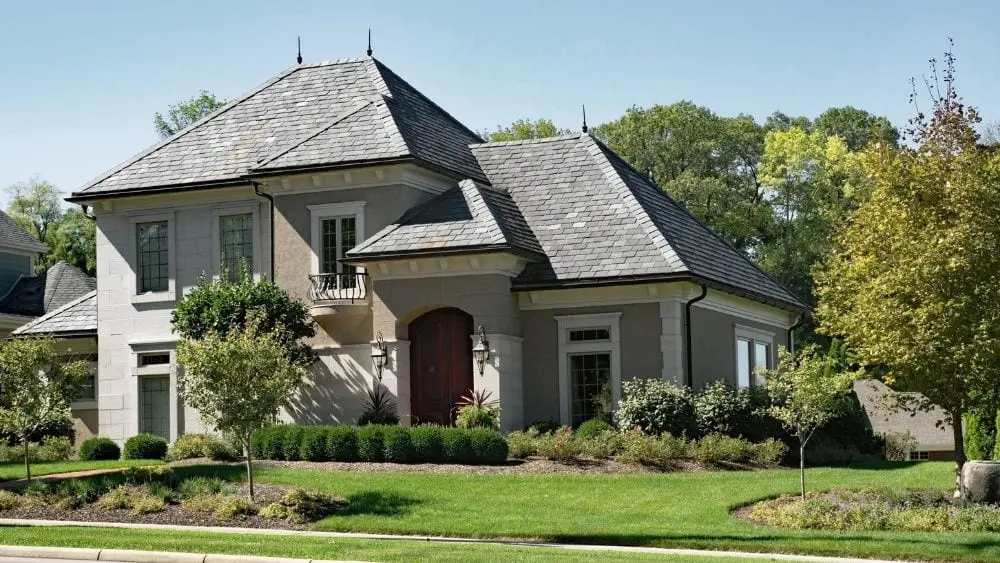
The Benefits of Stucco Siding
Aside from aesthetic appeal, stucco siding comes with many popular advantages.
Energy Efficiency
Stucco siding is known for its excellent energy efficiency. By forming what is essentially a concrete shell to protect the home, stucco requires less energy and power to keep cool air inside during the hot summer months and block cold winds during the chilly winter.
Noise Reduction
Thick stucco walls are not only great insulators from extreme temperatures, but they also block quite a bit of sound transmission. This makes them especially popular in cities and homes located near heavy traffic or crowded areas.
Durability and Longevity
A huge plus for stucco siding is its resistance to rot, mildew, mold, and invasive insects. It is extremely durable and help protect your home from extreme weather events, including high winds and ice storms.
It is also fire retardant and will protect your home in case of forest fires. Because of its superior durability, stucco siding is usually guaranteed to last a minimum of 15 to 20 years. Much like brick siding, with proper maintenance stucco has been known to last 50 years or more.
Low Maintenance
Stucco is simple and easy to care for; it may be cleaned using simple household cleaners and water. Be sure to check for cracks and breakage regularly and treat problem areas early to prevent moisture from entering your home and causing damage.
The most common issue with stucco is the appearance of cracks. Though infrequent, these issues must be sealed immediately. They can be easily filled with a flexible exterior caulk and leveled with a putty knife. You may also use a stucco patch to repair your siding. You may want to hire a professional to repair breaks so you won’t risk sacrificing the siding’s appearance.
Repair costs depend on the length and severity of the crack but typically cost $1 to $2 per linear foot with a one-time service fee of $50-$200.
Variety of Color Choices
Aside from multiple gorgeous textures and designs, stucco siding may also be mixed with various tints to create your dream color. Other siding materials are limited to the manufacturer’s color offerings, but with stucco your color choices are endless!
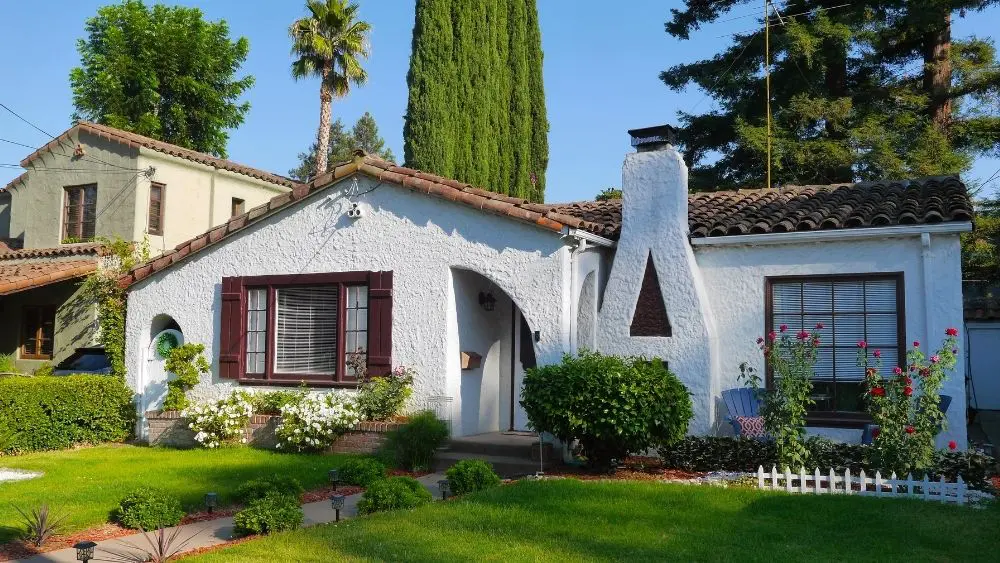
The Downsides of Stucco Siding
While there are many benefits to using stucco, there are a few drawbacks to consider when making your decision as to what type of siding to use on your home. If any of these are deal breakers for you, then you will want to look at other house siding options.
Requires Professional Installation
To achieve the even layering and seamless look, it’s strongly recommended that homeowners hire an experienced professional for installation. A stucco installation professional may charge $8,500 to $16,088, a significant portion of any project budget.
However, you will save money on repairs down the road by ensuring that your siding is correctly installed to seal out moisture and maintain efficiency.
High Upfront Cost
When considering the cost factor, stucco is often priced higher at the onset than other options, such as vinyl siding. This is mainly due to the installation and labor expenses; the material itself is actually very affordable. Stucco siding may cost between $5 and $9.58 per square foot installed.
However, it’s important to note that stucco siding requires little maintenance and upkeep costs and has a greater longevity than other types of siding.
All things considered, stucco siding may pay for itself in the long-run when you account for the lower energy bills and minimal repair and replacement costs.
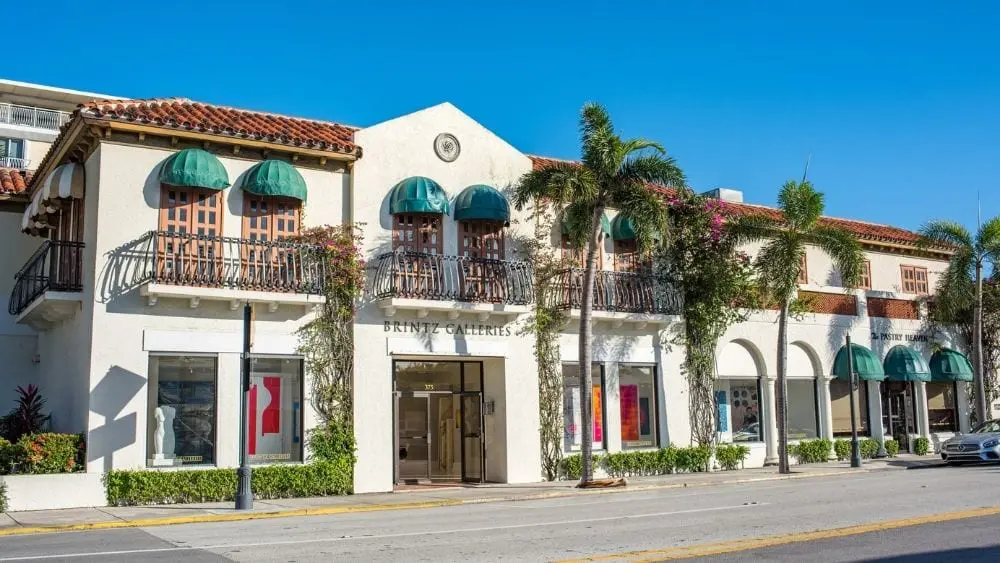
Climate Concerns
While stucco siding is ideal for sunny, moderate, warm and dry climates, there are a few climates that are not a great match for this type of façade – very damp areas and wet, tropical locations are not suitable. While stucco is an excellent water repellant, it has its limits.
Eventually, the stucco will become oversaturated if constantly exposed to heavy rainfall, leading to decreased efficiency. Underlying layers of wood and internal home structures may begin to take on moisture and deteriorate over time.
Additionally, climates that are prone to shifts in the ground are not suitable for stucco siding. Consistently wet soil, rocky areas, and regions prone to earthquakes may cause your foundation to shift and settle. Stucco is not flexible and is more likely to break or crack with the shifting foundation.
Colors are not Easy to Change after Installation
You will find many color options available, but once the stucco is applied to your home, it can be nearly impossible to change the color later. Painting over it can sometimes seal moisture inside and make the stucco less breathable. It will also need to be sandblasted off before you decide to resurface the stucco.
Never Stuck with Stucco Style!
Whether you choose a modern home with smooth texture or southwestern-style ranch house with lace and skip finish, stucco siding provides a unique charm that is inclusive and welcoming. Personally, I love the neutral or mottled stucco siding with a smooth or lightly-textured finish that draws attention to the home’s expressive details, like colorful trim or wooden beams that add a pop of intrigue.
With an array of finish options and virtually endless color possibilities, stucco siding can be adapted to any aesthetic for both a practical and elegant touch.

Melanie Theriault is a writer, counselor, and lifelong learner. She holds a B.A. in Sociology from Southwestern University, where she discovered her passion for fostering human connection through storytelling.
 Should You Buy a Home on a Golf Course?
Should You Buy a Home on a Golf Course?